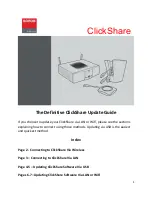
4.2
Cali bra tion Check Mode
If it is desired to check the sensor for its
response without sending a gas concentration
signal to a remote display device, this can be
accomplished by placing the Model S216A
into the Calibration Check (Cal Check) mode.
The 4-20mA output signal will be held at
1.5mA during the Cal Check mode (0.0mA is
optional).
Calibration Check Mode Procedure:
l
Place the magnet over the GMI Logo on
the cover of the Model S216A (figure 15,
page 15). Remove the magnet when a
flashing pair of bars,
- -
(figure 16, page
15), appears on the display.
l
Apply the Cal Check gas to the sensor and
the value of the gas concentration will be
indicated by the flashing display.
Typically, it takes three to five minutes to
display a steady reading.
l
When the reading has stabilized and the
test is complete, remove the gas and the
unit will return to the normal operating
mode when the concentration drops below
5% of full scale.
The Cal Check gas concentration must be at
least 10% of full scale before the unit will
complete the Cal Check sequence. If the
Model S216A is placed in the Cal Check
mode and no gas is applied for twelve
minutes, the unit will revert to a fault
condition. Re-applying the magnet over the
GMI logo will return the unit to normal
operation.
During the Cal Check mode, if the “Cal
Check” reading has stabilized and is out of
tolerance, the unit can immediately be placed
in the Calibration mode by applying the
magnet to the General Monitors’ Logo on the
lid of the Model S216A.
4.3
Cali bra tion Mode
Activating the Calibration Switch will
automatically disable the alarm circuits by
sending a 1.5mA (0.0mA is optional)
analog output current to the control room
display module. This will prevent
activation of the relay contacts when using
a General Monitors Readout/Relay
Display Module with the Model S216A.
General Monitors recommends that the
Model S216A Hydrogen Sulfide (H
2
S) Gas
Enhanced Smart Sensor be calibrated one
hour and again twenty four hours after
initial start-up, and that calibration be
checked at least every ninety (90) days to
ensure system integrity. General Monitors
is not implying that the customer should
expect problems with sensor life or
stability but “frequent” calibration checks
merely ensure the integrity of the life
protecting equipment.
The above statement is not intended to
discourage the customer from checking
calibration more frequently. Frequent
calibration checks are recommended for
problem environments (i.e. mud collecting
on the sensor head, sensors accidentally
being painted over, etc, see Appendix 5.4).
NOTE: A calibration check consists of
applying a 50% of full scale
concentration of gas to the sensor and
observing the reading on the Model
S216A.
General Monitors recommends that a
calibration schedule be established and a
log book should be kept showing
calibration dates and dates of sensor
replacement.
Operation
General Monitors
16
Содержание S216A
Страница 3: ...anytime the system power is off for more than an hour ...
Страница 7: ...2 General Monitors ...
Страница 11: ...6 General Monitors ...
Страница 19: ...General Monitors 14 ...
Страница 31: ...26 General Monitors ...
Страница 34: ...29 Model S216A Appendix fig ...
Страница 35: ...5 2 Engineering Documentation 5 2 1 Termination Outline Drawings 30 Appendix General Monitors fig ...
















































